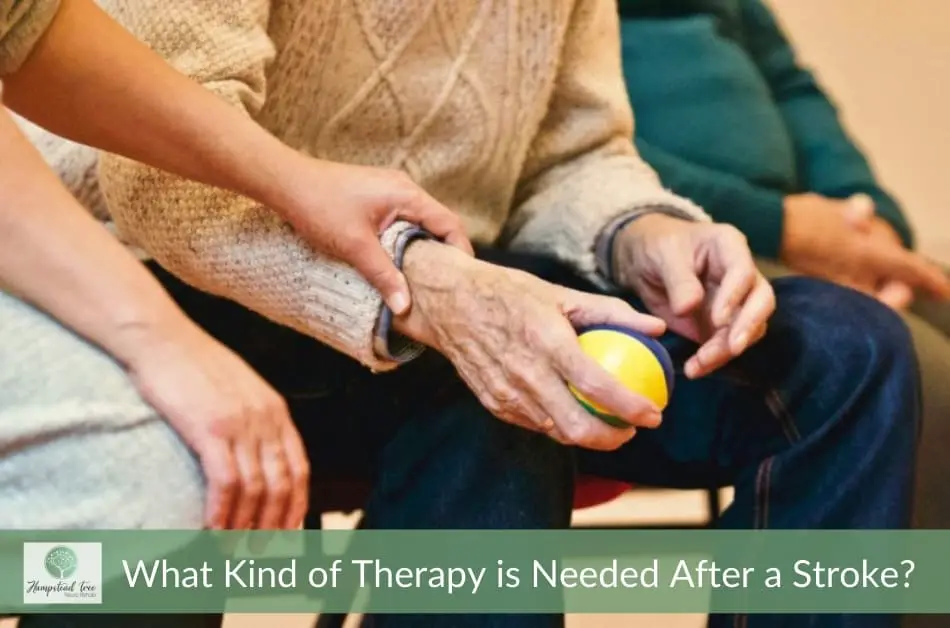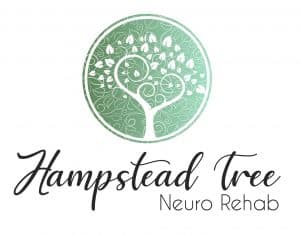
A stroke can be a traumatizing medical event in and of itself, but the recovery process afterward can be just as daunting. Fortunately, there are forms of therapy specifically designed to improve the quality of life for those who have recently experienced a stroke.
Stroke victims are more likely to benefit from occupational therapy, which involves developing a personalized training program to overcome a stroke’s physical and cognitive effects, such as limited arm mobility, decreased brain function, and other common complications.
Below, we’ll discuss all the benefits of occupational therapy, how it works, and how it can help those who have experienced strokes get back to their previous lifestyle.
Stroke Symptoms Therapy Can Help Reduce
Before addressing occupational therapy and how it helps stroke victims, it is worth discussing the symptoms patients usually experience following a stroke that occupational therapy seeks to resolve:
Cognitive Effects
A stroke is a medical emergency that can have some degree of a mental impact. Occupational therapists will seek to address the following cognitive complications commonly associated with strokes:
- Difficulty Concentrating: Patients recovering from a recent stroke may notice that it is difficult to stay concentrated on any particular task due to the brain’s inability to process information from the outside world.
- Memory Loss: Either you or your loved ones may notice lapses in memory following a stroke. Memory loss after a stroke can be tied to the brain’s reduced ability to concentrate. In this case, treatments aimed at improving concentration can also help take care of frustrating memory issues.
- Challenges with Problem-Solving: Strokes also tend to negatively impact a person’s problem-solving skills. For example, stroke patients may find it difficult to cook their own meals because they cannot perform the calculations needed to add the right amount of ingredients or make a serving of proportional size, given a specific recipe.
- Reduced Brain Function: Your brain runs several processes—some of which you don’t even notice are happening. A stroke throws these background processes into chaos; therefore, it is not uncommon for recovering stroke patients to struggle with simple functions like grabbing the TV remote and changing the channel.
- Issues with Visual Perception: Depth perception can also be affected by a stroke. If you or a loved one is still in the recovering stage, you will notice a clear inability to judge distances or heights properly. It may even be hard to spot the difference between an object in the foreground and background.
- One-Sided Activities: This problem arises from the fact that strokes typically only affect one side of the brain. The loved ones of stroke patients may notice this as an obvious example of the impact that a stroke can have, although the patient may not notice this impairment at all. For example, recovering stroke patients may only eat from one side of their plate without realizing it.
Physical Effects
Strokes have physical effects as well, to the point where patients cannot perform the same tasks they were once able to do with ease before the stroke.
- Apraxia (Trouble Moving Your Body): Following a stroke, you may have trouble moving your arms and legs how you want to; this is known as apraxia. Some signs of apraxia include the following:
- Hesitation or doing things very slowly
- Performing tasks with the incorrect amount of force or momentum
- Reduced Range of Motion and Pain: According to NICE, an estimated 30-70% of stroke patients have either reduced or no use of one arm and hand. Shoulder pain is also a common problem, with an estimated 84% of patients experiencing such pain.
- Chewing, Swallowing, and Speaking: Those who have recently experienced a stroke can find it hard to chew, swallow, and speak in the same way they were able to before the stroke.
- Note: It is important that swallowing problems are addressed with therapy as soon as possible because aspiration (food and drink in the airways) can lead to serious illnesses like infections and pneumonia.
- Poor Bladder and Bowel Control: After experiencing a stroke, patients can also have trouble managing basic bodily functions like using the toilets. Part of the therapy process will involve discreetly working with the patient to overcome this obstacle.

What is Occupational Therapy?
Occupational therapy is a rehabilitation process that can help the recovery of patients who recently had a stroke; this is particularly the case with patients suffering from the inability to perform daily functions such as getting out of bed, cleaning up, and eating.
The rehabilitation effort is led by qualified healthcare professionals called occupational therapists (OTs). They work in conjunction with other medical professionals like doctors, physiotherapists (PT), speech and language therapists (SaLT) and nurses to ensure that the recovery stage goes smoothly.
Occupational therapy for stroke patients will usually involve the following:
- Personalizing recovery goals on a patient-by-patient basis
- Helping patients cook meals until they can cook by themselves again
- Assisting patients in learning how to perform personal daily tasks once again
- Teaching adaptation techniques with activities to allow for improvement in the quality of life
- Working with employers to set a responsible timeline for patients’ return
- Providing cognitive support
- Installing special equipment like non-slip mats or special cutlery for the kitchen (Much of this necessary equipment may be loaned to the patient for free as long as they need it.)
OTs can perform these tasks in a wide variety of settings; they are certainly not limited to the confines of the hospital or an inpatient centre where you or a loved one was treated. These certified medical professionals are often willing to come to your home if this is the most comfortable or convenient option for you.
How Does Occupational Therapy Help Stroke Patients?
The National Institute for Health and Care Excellence (NICE) is a proponent of using occupational therapy to treat recovering stroke patients. The institute encourages these practices to enhance their functional activities and participation in society, therefore improving their quality of life.
Here are some reasons that occupational therapy can be beneficial for recovering stroke patients, according to NICE research:
- Significantly reduced risk of poor outcome (health deterioration)
- Increased independence in daily living
- Pre-discharge therapy home visits have been found to be both cost-effective and successful at improving quality of life
How Long Does Occupational Therapy Take?
The goal of occupational therapy is to help you meet your personalized treatment goals within the previously agreed-upon timeframe. Nothing is set in stone as far as the treatment process goes.
The OT will happily accommodate each patient’s needs and will certainly be open to the discussion of altering the patient’s routine once everyone has a better idea of how the recovery stages will go.
Signing Up for Occupational Therapy After a Stroke
An occupational therapist would be happy to connect with a patient and their loved ones to discuss the best path forward.
The first step will be a preliminary assessment that includes a full evaluation of the patient’s current abilities. This consists of careful observation of the patient’s ability to perform daily activities. The occupational therapist will also look at the patient’s critical thinking skills and mental state and refer them to any additional specialists they are encouraged to visit.
Final Thoughts
If you, a family member, or friend, recently suffered a stroke, then you may feel like there is a long, treacherous recovery ahead. However, occupational therapy is a certified treatment process that aims to help stroke patients return to a sense of normalcy.
The treatments involved in occupational therapy have been shown to be effective at improving the quality-of-life for patients experiencing the symptoms associated with recent strokes, allowing them to return to a state where they can pursue their favourite hobbies and activities once again.
Content Disclaimer
The information contained above is provided for information purposes only. The contents of this Blog article are not intended to amount to advice, and you should not rely on any of the contents of this Blog article. Professional advice should be obtained before taking or refraining from taking any action as a result of the contents of this Blog article. OccupationaltherapyBlog disclaims all liability and responsibility arising from any reliance placed on any of the contents of this Blog article.

